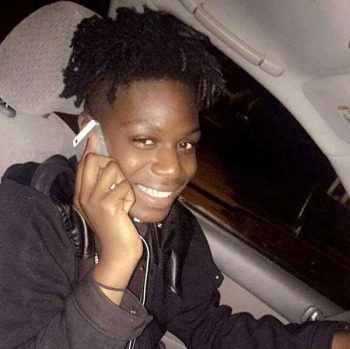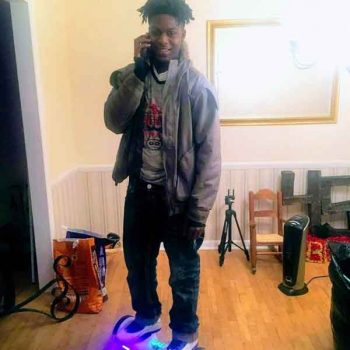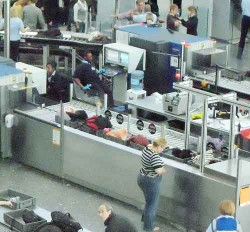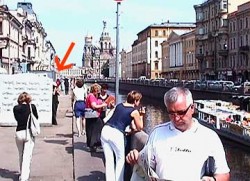
When Suzanne and Steve let their old dog out one recent April night, they were excited about their upcoming European vacation. They had arranged everything, they told me, for the trip, their house, and a sitter for the dog. They felt organized and eager. They let the dog back in and went to bed—unaware that the door hadn’t closed securely.
Suzanne arose early in the morning and in the kitchen, found her purse on the floor. Only mildly baffled, she figured it fell of the table. Until she turned and saw Steve’s wallet on the counter—empty. His wallet should have been in the bedroom, and it shouldn’t have been empty. Searching her purse, Suzanne found that her own wallet was missing, too.

“Steve!” she called. “Someone’s been in here!”
“Nah,” he said. They’d never had a break-in, not in their sleepy DeWitt retirement community, nor in their old blue collar neighborhood in Dearborn. They’d not even had a bicycle stolen. But it soon became clear that they’d had intruders.
Suzanne lunged for her phone to call 911, but her phone was gone. Steve’s was gone too. They didn’t have a landline. Then they found their truck was gone, as was its key fob that had been in Suzanne’s purse.
Steve ran to a neighbor’s house, awakening them at the crack of dawn to ask to use their phone. That’s when the neighbor discovered a window half open. But the intruders had backed off when they found a person sleeping inches from the window.
Steve and Suzanne filed a police report. They obtained new drivers licenses, stopped their credit cards, changed their passwords. They had to buy new phones, since they had owned the two stolen ones. Doors to their house lock (when they are locked!) with a digital keypad, so at least the crooks didn’t get house keys.

The couple went through the tedious process of setting up their new phones. Then Suzanne decided to delete some of the photos on her server. She downloaded them to her new phone. Lots of pictures of her little granddaughter. Delete, delete, delete and… what’s that? Pictures of teenagers in… in… hey, that’s Suzanne’s vehicle! Her stolen vehicle. And look at that, another picture of a kid holding a fan of money. Twelve hundred dollar bills! Could they be the intruders? The thieves? Hmmm, they took the photos with Suzanne’s stolen phone… and they’re sitting in Suzanne’s stolen truck…
Whoa. Let’s not jump to conclusions… Maybe they found the truck on the side of the road… with its key… and with the stolen cell phone inside… and they just climbed in and took some pictures, right? It could happen, no?
Suzanne sent the photos to the police. The police stepped up their investigation.
Before the phone’s battery died, its GPS placed it at a Lansing address. Before it could be retrieved, Suzanne had to track down the serial number of her phone.
The tiny DeWitt police department had to apply to big-city Lansing for a warrant with the phone’s serial number. These things took time.
By the time officers knocked on the door at the address (which turned out to be a condemned house), the suspects were no longer there. And the phone had gone dark.
Meanwhile, the credit card alerts started to roll in. American Express was vigilant in declining charges at a grocery store and a gas station. Artificial intelligence had flagged the attempted purchases as suspicious activity due to the cardholders’ spending pattern. Was there surveillance video at either place? It has been requested.
Unbelievably, the burglars returned to the same neighborhood in the stolen truck several days after their first spree, and hit another house or two. Police noticed one of the teens driving the truck. A chase ensued, until the kid plowed off the road and the vehicle was smashed and totaled.
The truck was 11 years old, so Suzanne had only liability insurance on it. It was in excellent condition though, and will cost a lot to replace. The truck had been towed and impounded.
To add insult to injury, Suzanne learned that she was liable for the $270 towing fee and $35 per day. But she wasn’t allowed to dispose of the vehicle because the police hadn’t released it. Impound fees were mounting.
Two boys were taken into custody, one 15 and one 18 years old.
Stolen phone selfies
Look at these photos. This is a proud and confident boy. He’s not a poverty-stricken street kid. He doesn’t look like a gangster. He looks more like a fashion model on that hoverboard. He appears vain and cocky. Grinning, he flaunts a fan of 12 hundred-dollar bills.
The Lansing State Journal wrote that the boys “preyed on the elderly.”
“The elderly!” scoffed Suzanne, a nurse who is only semi-retired. She and her husband, who also works part time, were clearly annoyed by that.






